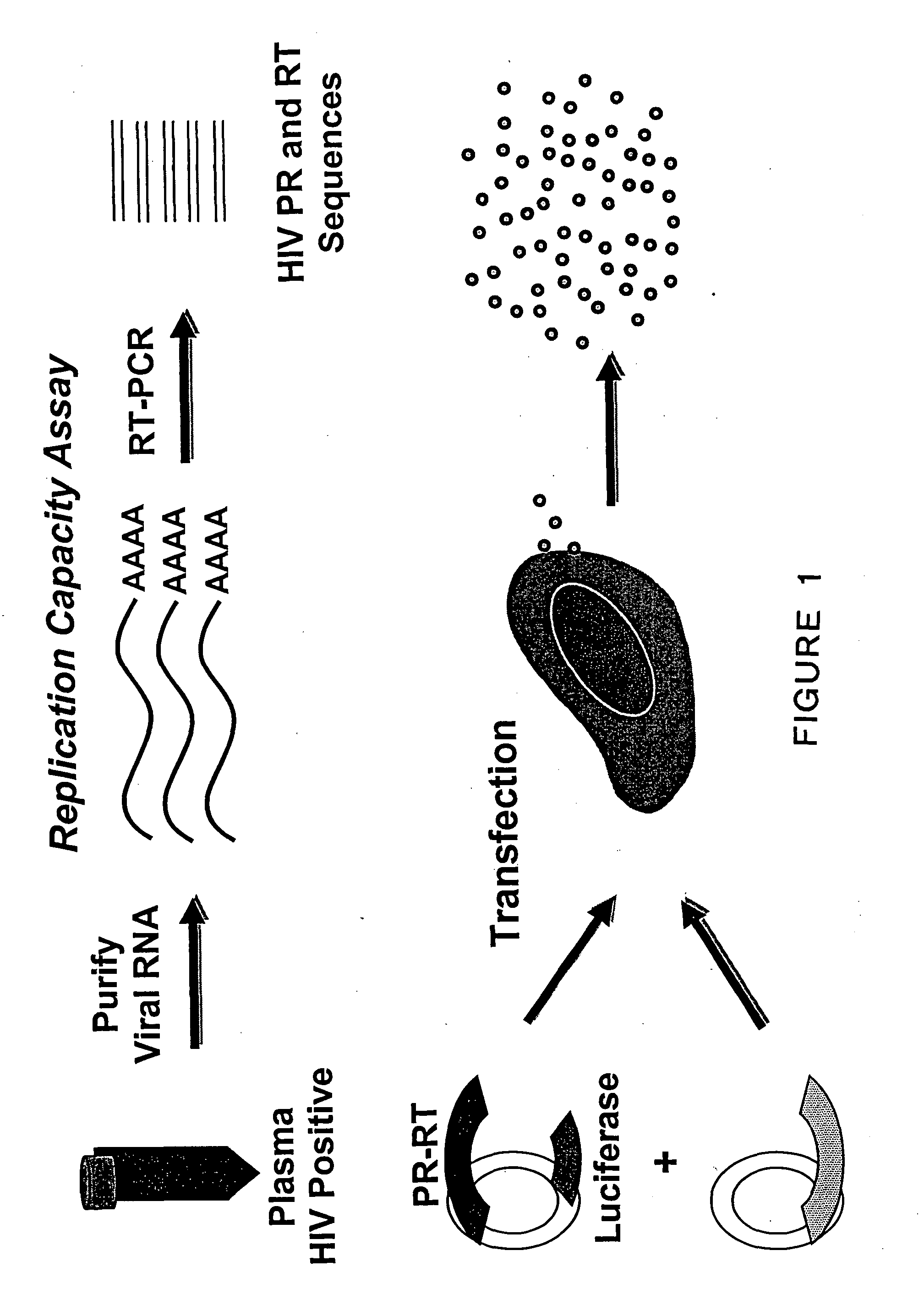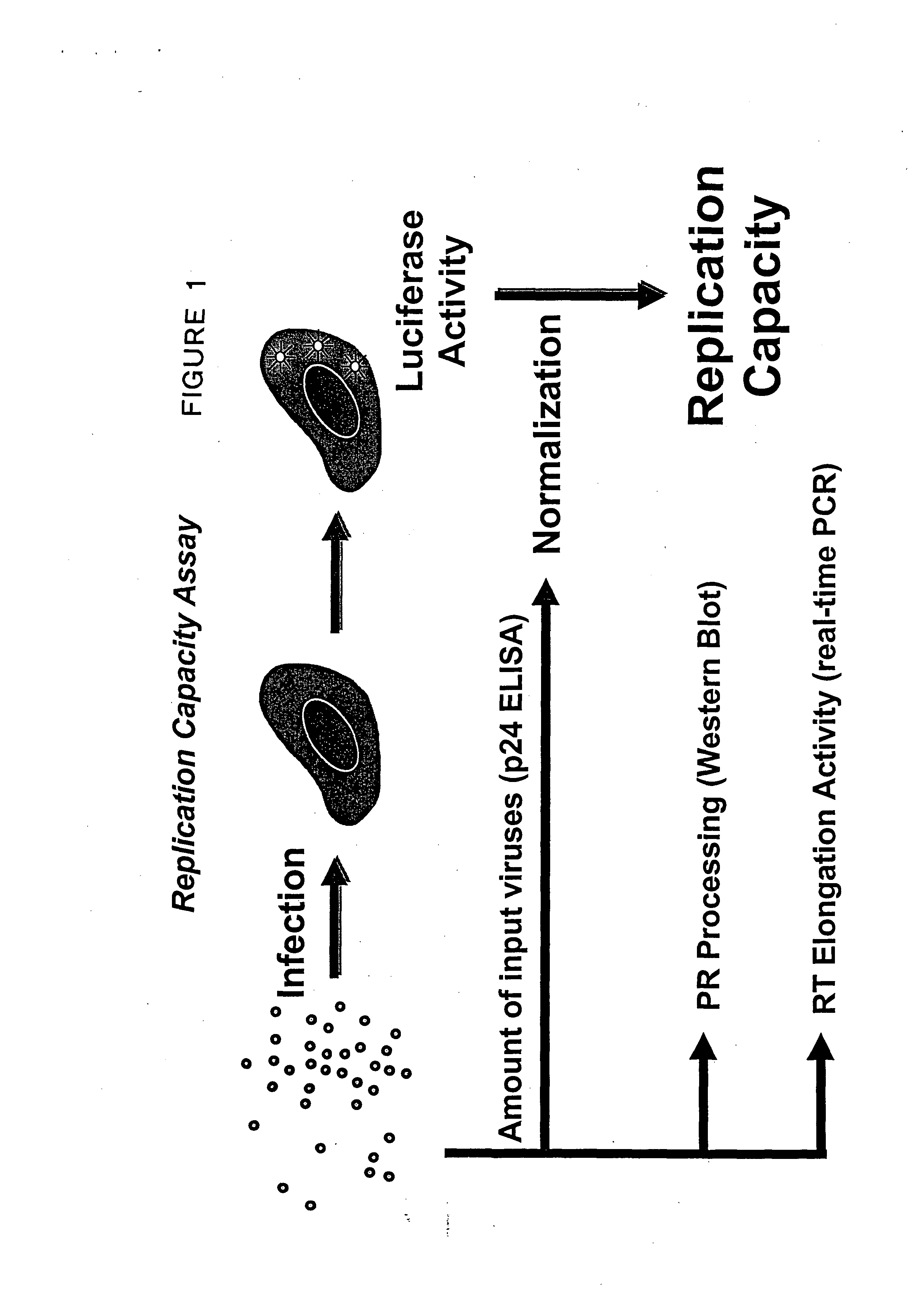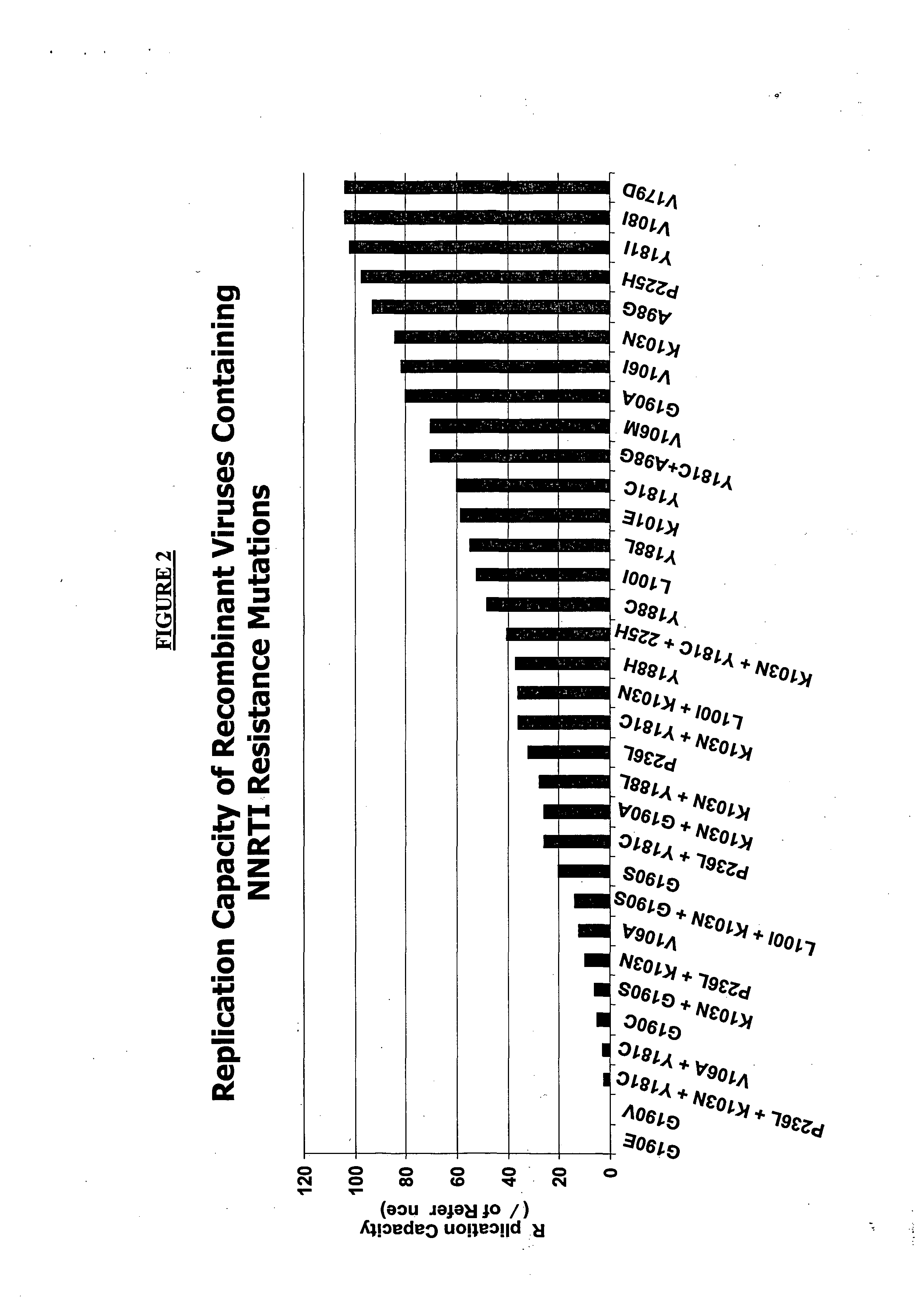Compositions and methods for determining the replication capacity of a pathogenic virus
a technology of pathogenic viruses and compositions, applied in the field of compositions and methods for determining the replication capacity of pathogenic viruses, can solve the problems achieve the effects of saving considerable time and money, improving the quality of life of patients, and more effective antiviral treatment regimens
- Summary
- Abstract
- Description
- Claims
- Application Information
AI Technical Summary
Benefits of technology
Problems solved by technology
Method used
Image
Examples
example 2
6.2 Example 2
Measuring Replication Fitness of Viruses with Deficiencies in RT Activity
[0137] This example provides methods and compositions for identifying mutations in reverse transcriptase that alter replication fitness. The methods for identifying mutations that alter replication fitness can be adapted to other components of HIV-1 replication, including, but not limited to, integration, virus assembly, and virus attachment and entry. This example also provides a method for quantifying the affect that specific mutations reverse transcriptase have on replication fitness. Means and methods for quantifying the effect that specific protease and reverse transcriptase mutations have on replication fitness can be adapted to mutations in other viral genes involved in HIV-1 replication, including, but not limited to the gag, pol, and envelope genes.
[0138] Fitness test vectors were constructed as described in Example 1. Fitness test vectors derived from patient samples or clones derived fro...
example 3
6.3 Example 3
Analysis of Patient Samples to Identify Resistance-Associated Mutations
[0146] This example demonstrates a method of analyzing patient samples so as to identify mutations that are associated with NNRTI resistance. It also demonstrates that K101P, K103R and V179D as well as the combination of K103R and V179D are new NNRTI-resistance mutations.
[0147] In order to determine the relationship between an HIV-1 strain's reverse transcriptase (RT) sequence and its susceptibility to NNRTIs, a data set of 18,034 samples was analyzed genotypically as well as phenotypically. Those samples with NNRTI resistance in the absence of well-characterized NNRTI mutations were identified by univariate and combinatorial correlation analysis. 8,673 samples had no mutation at position 100, 181, 188, 190 or 227, nor any of the following mutations in RT: A98G, K101E, K103N / S, V106A / M, P225H, M230L, or P236L, but still had high-level reductions in susceptibility to one or more NNRTIs. Of the 8,673 s...
PUM
| Property | Measurement | Unit |
|---|---|---|
| resistance | aaaaa | aaaaa |
| nucleic acid sequence | aaaaa | aaaaa |
| concentration | aaaaa | aaaaa |
Abstract
Description
Claims
Application Information
 Login to View More
Login to View More - R&D
- Intellectual Property
- Life Sciences
- Materials
- Tech Scout
- Unparalleled Data Quality
- Higher Quality Content
- 60% Fewer Hallucinations
Browse by: Latest US Patents, China's latest patents, Technical Efficacy Thesaurus, Application Domain, Technology Topic, Popular Technical Reports.
© 2025 PatSnap. All rights reserved.Legal|Privacy policy|Modern Slavery Act Transparency Statement|Sitemap|About US| Contact US: help@patsnap.com



